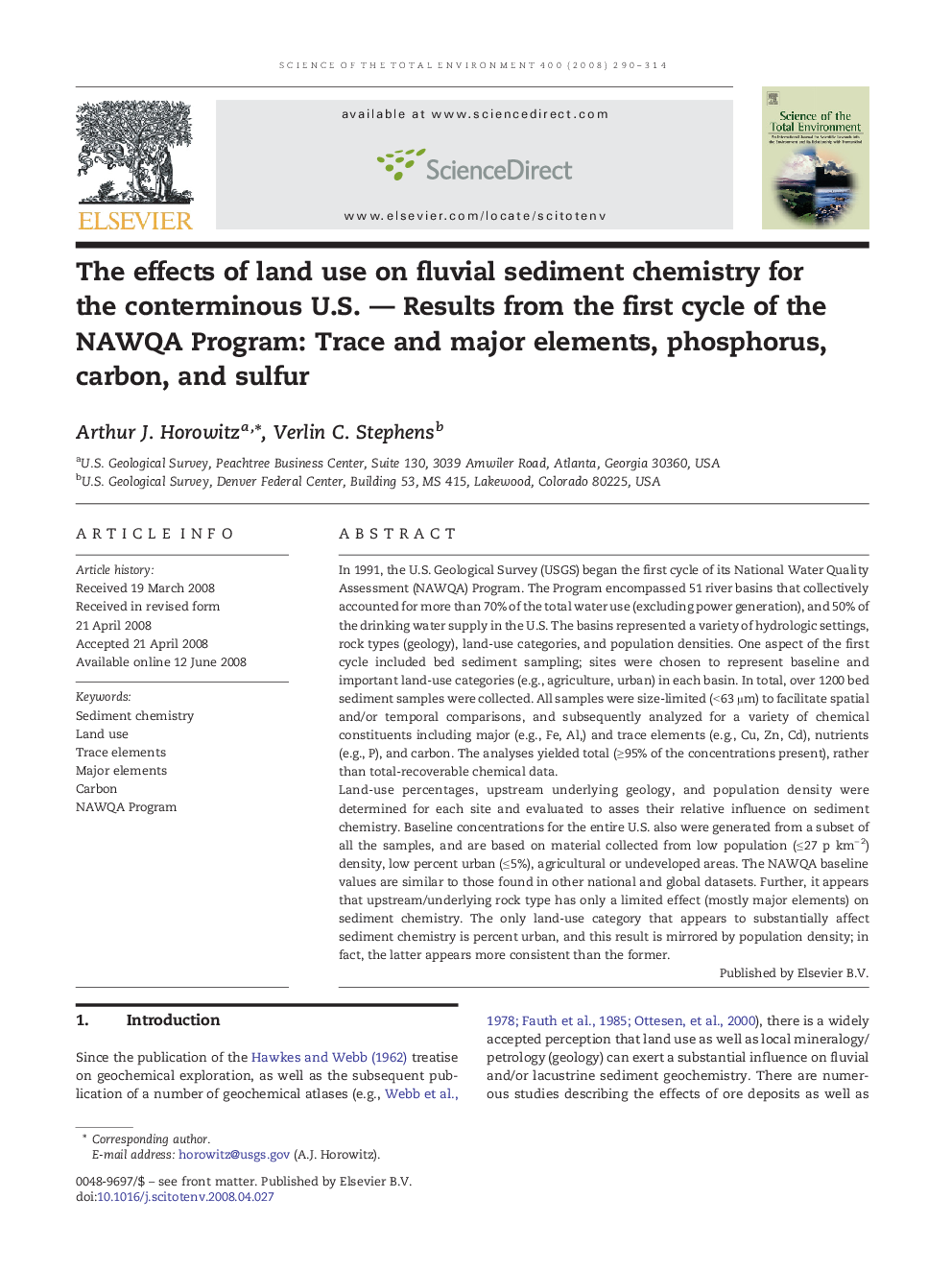| کد مقاله | کد نشریه | سال انتشار | مقاله انگلیسی | نسخه تمام متن |
|---|---|---|---|---|
| 4432550 | 1619919 | 2008 | 25 صفحه PDF | دانلود رایگان |

In 1991, the U.S. Geological Survey (USGS) began the first cycle of its National Water Quality Assessment (NAWQA) Program. The Program encompassed 51 river basins that collectively accounted for more than 70% of the total water use (excluding power generation), and 50% of the drinking water supply in the U.S. The basins represented a variety of hydrologic settings, rock types (geology), land-use categories, and population densities. One aspect of the first cycle included bed sediment sampling; sites were chosen to represent baseline and important land-use categories (e.g., agriculture, urban) in each basin. In total, over 1200 bed sediment samples were collected. All samples were size-limited (< 63 µm) to facilitate spatial and/or temporal comparisons, and subsequently analyzed for a variety of chemical constituents including major (e.g., Fe, Al,) and trace elements (e.g., Cu, Zn, Cd), nutrients (e.g., P), and carbon. The analyses yielded total (≥ 95% of the concentrations present), rather than total-recoverable chemical data.Land-use percentages, upstream underlying geology, and population density were determined for each site and evaluated to asses their relative influence on sediment chemistry. Baseline concentrations for the entire U.S. also were generated from a subset of all the samples, and are based on material collected from low population (≤ 27 p km− 2) density, low percent urban (≤ 5%), agricultural or undeveloped areas. The NAWQA baseline values are similar to those found in other national and global datasets. Further, it appears that upstream/underlying rock type has only a limited effect (mostly major elements) on sediment chemistry. The only land-use category that appears to substantially affect sediment chemistry is percent urban, and this result is mirrored by population density; in fact, the latter appears more consistent than the former.
Journal: Science of The Total Environment - Volume 400, Issues 1–3, 1 August 2008, Pages 290–314